Soft materials for roofing have long earned well-deserved popularity. They still do not give up their well-deserved position, which even the economic crisis cannot influence. Over time, new types of roofing materials began to appear on the market, for example, such as soft tiles. This article will discuss the benefits, features and types of soft roofing.
Content
What is a soft roof?
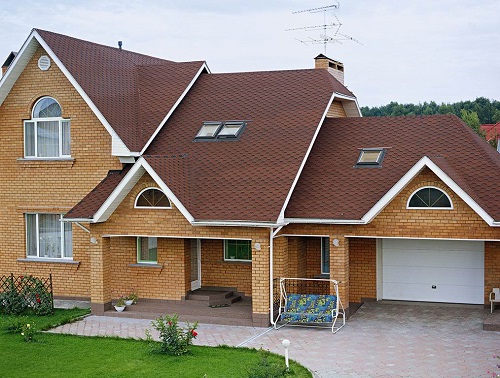
Soft roofing is a roofing material that has received particular preference due to its practical and aesthetic qualities. The name has, rather, a generalized concept, which includes such roofing as a flat membrane roof, roll materials and soft tiles. All of them are united by such quality as flexibility, and the last two are made on the basis of bitumen.
In the past century, the use of soft roofing was widespread and was used in various types of construction - industrial and civil. The first place in popularity was occupied by roofing roof, the quality and strength of which was often criticized. The material had to be laid in several layers and subsequently periodically repaired.
At present, the building materials industry has advanced far.
The production of soft roofs today is based on strong, high-quality and durable materials. Often, in their manufacture they use fiberglass or fiberglass, which is laid in the basis of the material. Due to the multilayer structure, they are resistant to environmental influences. The surface coating makes such materials externally attractive. It allows you to use them for roofing where high demands are placed on the appearance of the roof. They are successfully used in large commercial and industrial facilities, warehouses and private individual buildings.
During the installation of roofing, builders use:
- different types of mastics,
- membranes made of polymeric materials,
- roll material
- shingles.
About the benefits of a soft roof
A soft roof made using modern materials has unique properties and has undeniable advantages over other roofs:
- high level of waterproofing and water resistance, which is achieved due to the multilayer structure of the coating and its monolithicity;
- materials for soft roofs are resistant to fluctuations in the temperature of the outside air;
- lack of melting under the influence of sunlight and changes in quality characteristics in frost;
- resistance to damage of a mechanical nature, as it has flexibility and elasticity;
- excellent sound-absorbing and heat-insulating properties, which are especially important in the period of precipitation;
- does not create a favorable environment for the development and reproduction of fungi and mold and is not subject to corrosion;
- It is economically viable - rather inexpensive component materials and ease of installation. When installing a finish coating on roofs with complex geometry, the amount of waste is minimized;
- retains its original properties throughout its entire service life; Qualitatively made coating subsequently does not require repair work;
- It is an excellent dielectric, since it does not condense on itself charges of atmospheric electricity. As a result, there is no need for additional devices for a lightning rod;
- resistance to fire and to fading of the color of the coating;
- heat-shielding properties that reduce heat loss in the cold season and maintain an atmosphere of coziness and home comfort.

When choosing roofing materials for a soft roof, first of all, pay attention to the indicators of their heat resistance, and only then to the mechanical properties, flexibility and elasticity.
Varieties of soft roofing
Soft roofing is a combination of several types of materials that are combined under this name because of their common quality - flexibility. In their production, modified bitumen acts as the main component. This allows you to have an elastic coating that is convenient during installation and reliable during further operation. The separation of the soft roof by type occurs depending on the amount of impurities contained in the material.
Rolled roofing material
The first class of soft roofs include coatings made of bituminous materials. In its composition, bitumen is a complex compound consisting of hydrocarbons of natural or synthetic origin. The advantages of bitumen coatings are their frost resistance, resistance to fire and ultraviolet radiation.
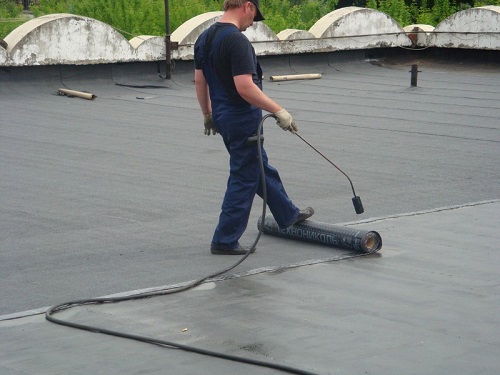
Rolled roofs are often also called bitumen-polymer and are made on the basis of fiberglass or synthetic base, which is a guarantee of high waterproofing of the roof. Among the disadvantages can be noted its vapor permeability.
Such materials for soft roofing are laid using a liquid-fuel or gas-air burner. In order for the styling to be of high quality, it is necessary to monitor the material - it must melt, not burn.
Sometimes a roof of this type is the only way out when roofing in agricultural buildings, as well as other brick and reinforced concrete buildings. The duration of her service ranges from 8 to 25 years.
Depending on the angle of inclination of the roof and installation methods, modern rolled materials are laid in either one or several layers. The basis for this can be materials in the form of wood and concrete, metal and asphalt concrete, flat slate and insulation boards, as well as an old roll coating.
In addition to rubber-bituminous materials and fiberglass, brizole and insul can be used in the manufacture of roll roofing. They are made on the basis of polyisobutylene and are safe waterproofing and roofing materials.
Soft roll roofing is affordable, which is very important when installing a roof covering with a large area. Therefore, it is widely used in industrial and residential construction.
Roofing from bituminous tiles
When you hear the expression soft roof, flexible tile or soft bituminous tile, you should not be confused. In any case, we are talking about the same roofing material, which is also called shingle and shingle. Its basis is fiberglass impregnated with bitumen and sprinkled with stone granules (basalt and mineral chips).
For the first time they learned about it more than 100 years ago and still use it as a reliable and attractive roofing material. It differs in color and shape (hexagon, oval, triangle, rectangle, wavy shape), is easy to assemble and has a number of advantages. Among them:
- high indicators of durability, which are explained by the absence of significant thermal deformations and decay. Bitumen and fiberglass are not subject to corrosion;
- remarkable waterproofing properties;
- resistance to ultraviolet radiation;
- excellent soundproofing properties of the material, combining the plasticity of the bitumen layer and sprinkling of basalt. They allow you to dampen the sound of drops and hail during rains and thunderstorms;
- a unique opportunity to cover surfaces of complex roofs with arbitrary slopes up to vertical;
- it is easy to mount and therefore can be laid independently and in a short time;
- the material has a low specific gravity, which allows you to install lightweight roof systems on the roof;
- soft tiles have a beautiful appearance, which on the finished roof resembles scales. Manufacturers are constantly working on new color schemes for bitumen shingles;
- the coating has a low coefficient of thermal expansion, so it can be used in any climatic zone.
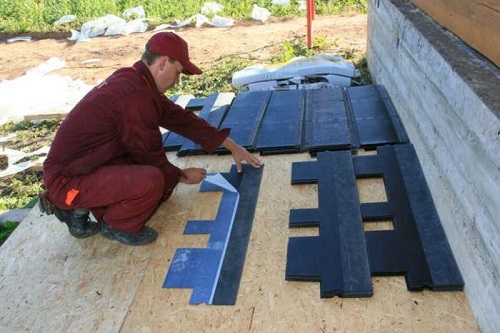
All these advantages and the ability to have a variety of shapes and colors have made soft tiles a favorite roofing material for many developers. It can act as an analogue of ceramic tiles.
Sheets of bituminous tiles have special curly cuts placed only on one side. Their basis is fiberglass or felt (organic cellulose). It acts as a reinforcement fastening the layers of bitumen and polymer additives. Thanks to additives, the material acquires flexibility and elasticity, resistance to deformation and high strength.
The outer side of the flexible tiles is covered with mineral chips or special basalt granulate. Such a coating varied in color has several functions - it makes the roof outwardly attractive and individual, and also reliably protects it from external negative influences.
On the reverse side, a special adhesive composition of rubber bitumen is applied to the tile in the factory, which is protected with a plastic film. Silicon sand can play this role, the role of which is to protect the tiles from sticking together during transportation.
Soft bituminous tiles can be used on pitched roofs with a minimum slope of 10 degrees. The maximum angle of inclination can be the largest, which allows the use of bitumen shingles on the vertical planes of walls adjacent to the roof.
The material is used both in the construction of a new roof, and in the repair or reconstruction of an existing roof. The difference is that during the repair of the roof, the laying of bitumen elements is performed on top of the aged coating, which must first be prepared and cleaned.

Please note that this can be considered the only drawback of soft tiles, which must be placed on a carefully prepared surface of the base.
This material can serve without failure for 15-20 years. They cover not only private cottages and houses, but also industrial buildings, restaurants, hotels and other buildings with a complex and original roof structure. Perfectly laying on an uneven surface, bituminous tiles can hide any imperfections. The light weight of the material eliminates the need to create a reinforced load-bearing roof structure.
The ratio of excellent performance and price makes soft shingles a favorite and optimal material for many construction organizations and individual developers.
Membrane soft roof
The production of membrane soft roofs is based on polymers from which membranes for roofing are made. Such a roof is by far the best in strength and durability. If we take other types of soft roofs for comparison, then it is, accordingly, much more expensive than bituminous coatings.
You can talk about the membrane roof as a strong, durable, flexible waterproofing material that retains its characteristics under seasonal temperature differences. It is not oxidized and can last for 15-35 years.
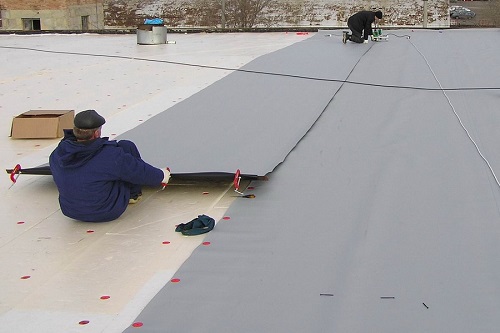
The membrane is the best option for roofing buildings and structures that have a large roof surface. These include production shops, shopping centers, sports complexes, supermarkets, swimming pools and other large facilities. In the case of using less high-quality and durable roofing in the future, you will have to spend money on regular repairs, which is quite large for large areas. Soft membrane roofing is also suitable for roof repairs on existing roofs.
The polymer membrane is a combustible material, and belongs to the combustibility group G1 and G2 (refractory materials). Other bitumen materials belong to group G4, called "materials with increased fire hazard."

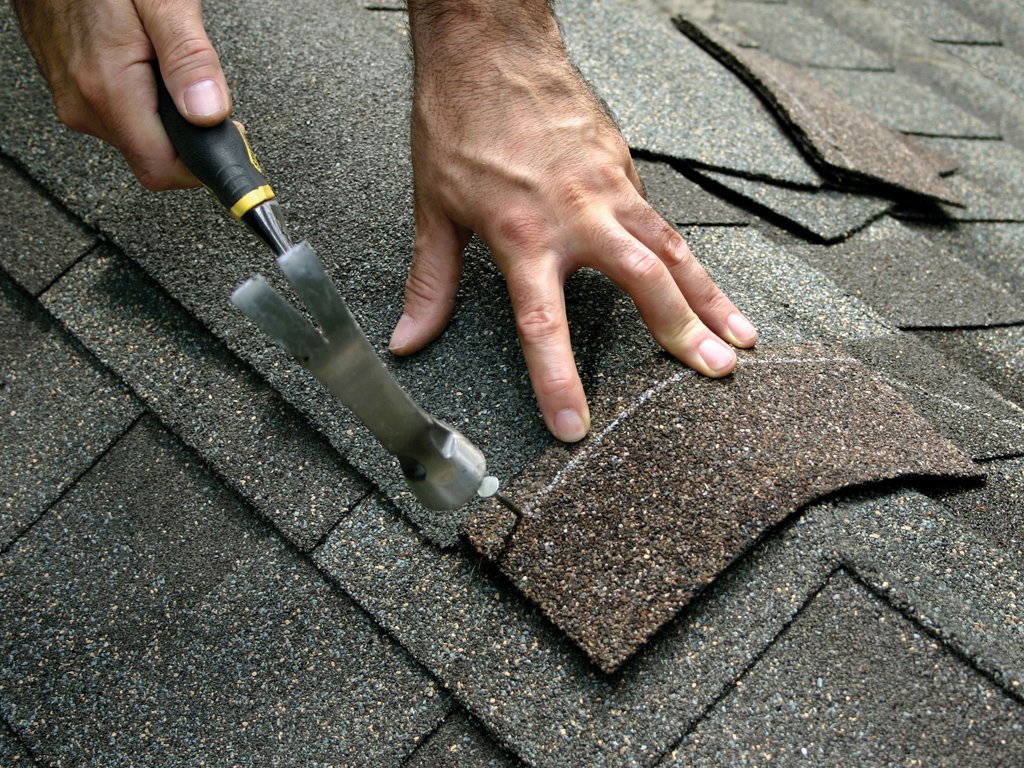



Alas, no comments yet. Be the first!